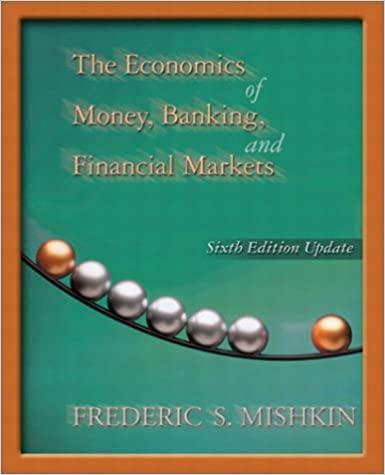Select the best answer to each of the following questions and mark your selection on the edi. 5 points each The variation inherent in the returns of a portfolio depends upon: B. the number of assets in the portfolio, the shape of the efficient frontier, and the individual variation of the assets in the portfolio. the number of assets in the portfolio, the variation of the individual assets, and the correlation between the assets in the portfolio. the number of assets in the portfolio, the variation of the individual assets, and the shape of the efficient frontier. the covariance between the assets in the portfolio, the variation of the individual assets, and the correlation between the assets in the portfolio. D. The Capital Asset Pricing Model(CAPM) suggests that the required rate of retum on an investment should be based on the: A. asset's level of total variability. B. asset's level of systematic risk. C. asset's position on the efficient frontier. D. investor's attitude toward risk. E. investor's total level of wealth. between those assets must be less To diversify with two assets, the than B covariance zero. covariance; one. correlation coefficient; one. correlation coefficient; zero. standard deviation, one. On October 15, 2019, the Department of Labor announced that the Producer Price Index (PPI) experienced an unexpected 1.1 percent increase in September, the largest jump in 9 years. Based on this information alone, what would you expect to happen to interest rates and stock prices? A. We should expect lower interest rates and lower stock prices. We should expect no changes in interest rates and stock prices. We should expect higher interest rates and higher stock prices. We should expect lower interest rates and higher stock prices. We should expect higher interest rates and lower stock prices. D. E. must be greater than If a bond is selling for a discount, then the bond's market interest rate; the remaining life of the bond market interest rate; its coupon rate call premium: coupon rate coupon rate: the remaining life of the bond coupon rate; its market interest rate Select the best answer to each of the following questions and mark your selection on the edi. 5 points each The variation inherent in the returns of a portfolio depends upon: B. the number of assets in the portfolio, the shape of the efficient frontier, and the individual variation of the assets in the portfolio. the number of assets in the portfolio, the variation of the individual assets, and the correlation between the assets in the portfolio. the number of assets in the portfolio, the variation of the individual assets, and the shape of the efficient frontier. the covariance between the assets in the portfolio, the variation of the individual assets, and the correlation between the assets in the portfolio. D. The Capital Asset Pricing Model(CAPM) suggests that the required rate of retum on an investment should be based on the: A. asset's level of total variability. B. asset's level of systematic risk. C. asset's position on the efficient frontier. D. investor's attitude toward risk. E. investor's total level of wealth. between those assets must be less To diversify with two assets, the than B covariance zero. covariance; one. correlation coefficient; one. correlation coefficient; zero. standard deviation, one. On October 15, 2019, the Department of Labor announced that the Producer Price Index (PPI) experienced an unexpected 1.1 percent increase in September, the largest jump in 9 years. Based on this information alone, what would you expect to happen to interest rates and stock prices? A. We should expect lower interest rates and lower stock prices. We should expect no changes in interest rates and stock prices. We should expect higher interest rates and higher stock prices. We should expect lower interest rates and higher stock prices. We should expect higher interest rates and lower stock prices. D. E. must be greater than If a bond is selling for a discount, then the bond's market interest rate; the remaining life of the bond market interest rate; its coupon rate call premium: coupon rate coupon rate: the remaining life of the bond coupon rate; its market interest rate







